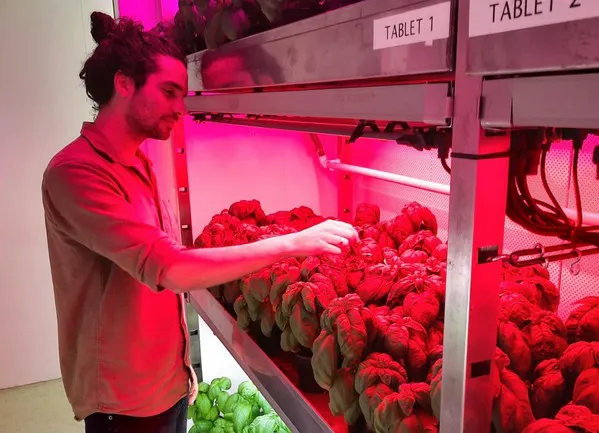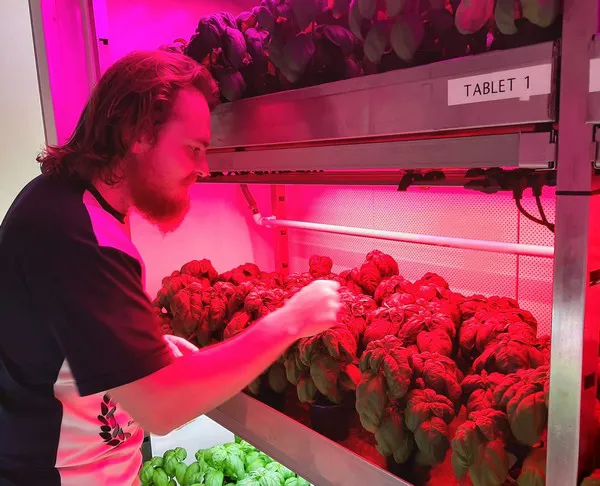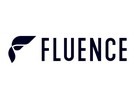Dynamic lighting is a concept that has been going around the industry for quite a while now, yet its benefits have not been backed up by science. That is why Fluence partnered up with HAS University of Applied Sciences to observe the effects of alternating spectra on young plants. “Usually, propagation is done with broad spectrum for uniform growth and easier transplantation. With this research, we wanted to see the effect of alternating spectra during the propagation phase of tomato and cucumber but also on the full cycle of lettuce and basil grown indoors to identify possibilities for energy reduction without sacrificing plant quality,” says Haris Ouzounis, Research Project Manager at Fluence EMEA.
How the project came into being
This research was born because three students of HAS University of Applied Sciences, Tim Ellerkamp, Jaime Ahumada Espinoza, and Harley Jackson approached Fluence to work on a forward-looking photobiology study.

"The project assignment was a great opportunity for the three of us to work closely with experts from Fluence, and learn a great deal about the effect of dynamic lighting on plant morphology and physiology.
It was a fun and informative research that put us in touch with researchers and technicians working with the top of the line horticultural products and genetics and giving us a taste of real research that can hopefully make changes in the industry!It will be very interesting to see what we will be able to achieve with this concept in the future, as so many different ways of application still need to be explored." said Jaime, Harley, and Tim.
The experiment
The students, HAS University of Applied Sciences and Fluence collaborated and came up with the idea to study dynamic lighting and the effect of spectrum fluctuation on young plants and developed the respective experimental design. Gracia Ribas, the project supervisor from HAS University of Applied Sciences said that “the project results from this research gave a first insight on how four different crop species react to changes in light and furthermore, the three students developed their research skills on plant physiology performing measurements on growth, leaf chlorophyll concentration and stomatal conductance”.

In the project, four different spectra were trialed. A broad-white spectrum served as the reference point and then three alternating spectra were imposed: 1) White (the reference) alternating with monochromatic red, 2) White (the reference) alternating with red/blue, and 3) White (the reference) alternating with White/Far-red.
“The research project features Fluence’s RAZR M series, which are low profile fixtures with market-leading efficacy. We alternated the spectra every three to four days to observe how the plants responded primarily in terms of morphology, but also to observe how fast the photosynthetic machinery adapts to such rapid changes. With regards to PPFD, we followed standard practices: We started with 100 micromoles, and then we increased it to 150 towards the end,” Haris Ouzounis explains.
Diving deep
The goal is to see how young plants react to such a lighting strategy, and to what extent the plant morphology is affected. “We are going to look into different things, such as morphology, plant biomass, the number of leaves, and leaf shape,” he continues to explain. “What I personally am most interested in is how strong the seedlings will turn out and how suitable they will be for transplanting. The goal is to reduce the transplant shock as much as possible when seedlings go from the nursery to the greenhouse.”

The collaboration between Fluence and HAS University of Applied Sciences will continue through February 2023, where the organizations will trial different crops in growth chambers. Then, they will evaluate how young plants grown under alternating spectra perform in a greenhouse in terms of light acclimation after transplant (photoacclimation). On top of the transplant shock, there is also the need for the plant to get acclimated to the light in the greenhouse, or in the indoor farm. “When these young plants get into the cultivation, they would receive a different kind of light. In greenhouses, there is the sunlight which does not have a stable spectrum and intensity, but it varies throughout the day and/or period. Therefore, plants need to get photoacclimated to express their full genetic potential during the growth.” For the current research project, they have been studying the tomato cultivar Merlice and the cucumber cultivar Plexor, both from De Ruiter.
On top of trialing this concept with tomatoes and cucumbers, Fluence and HAS University of Applied Sciences are also looking into a full cycle for lettuce and basil. “So, for this, we won’t only assess the morphology, but also yield and productivity,” says Haris. “I can see this part of the research being particularly interesting for vertical farmers.” The cultivars we evaluated are the Alega lettuce and the Dolly basil both by Enza Zaden.

Fluence is in the process of investigating with HAS University of Applied Sciences how the collaboration can be extended. “We need to attract more young professionals for the horticulture sector. LED lighting is a very interesting area. We are delighted to work with the students and HAS University of Applied Sciences to support the next generation of growers,” said Timo Bongartz, General Manager of Fluence in Europe.

